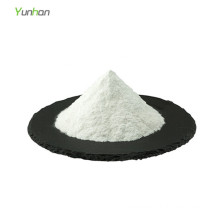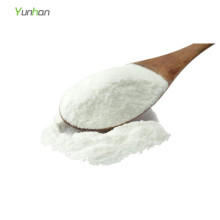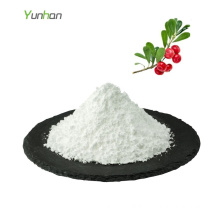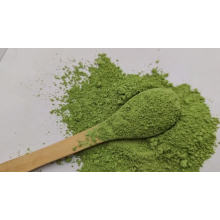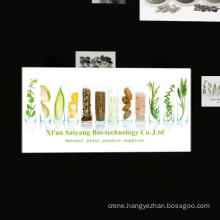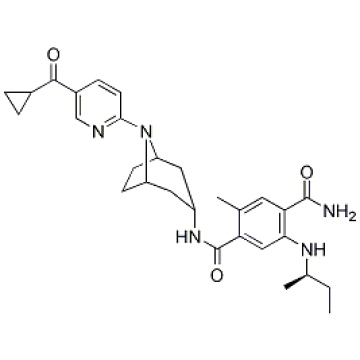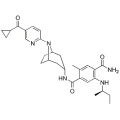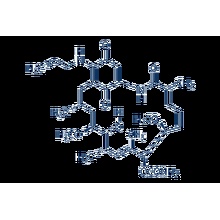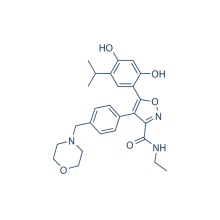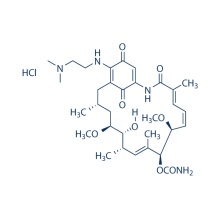XL888 1149705-71-4
Product Description
.cp_wz table {border-top: 1px solid #ccc;border-left:1px solid #ccc; } .cp_wz table td{border-right: 1px solid #ccc; border-bottom: 1px solid #ccc; padding: 5px 0px 0px 5px;} .cp_wz table th {border-right: 1px solid #ccc;border-bottom: 1px solid #ccc; padding: 5px 0px 0px 5px;}
Molecular Weight:
503.64 XL888 is an ATP-Competitive Inhibitor of HSP90 with IC50 of 24 nM. Phase 1.
Biological Activity
XL888 induces HER2 degradation in NCI-N87 cells with IC50 of 56 nM.
XL888 inhibits the proliferation of HER2 over-expressed NCI-N87, HER2
over-expressed BT-474, HER2 over-expressed MDA-MB-453, MET mutated
MKN45, B-Raf mutated Colo-205, B-Raf mutated SK-MEL-28, EGFR mutated
HN5, EGFR mutated NCI-H1975, PI3K mutated MCF7, and K-Ras mutated A549
with IC50 of 21.8, 0.1, 16.0, 45.5, 11.6, 0.3, 5.5, 0.7, 4.1 and 4.3
nM. XL888 leads to dose-dependent decreases in the growth of
vemurafenib-naive and vemurafenib-resistant melanoma cell lines and
melanoma cell lines with intrinsic resistance with IC50 of all around
0.1 μM.
The growth inhibitory effects of XL888 are associated with
induction of either a G1-phase cell-cycle arrest (WM164, M229, M229R, M249, M249R, 1205Lu, and WM39 cell lines) or a G2-M
phase cell-cycle arrest (WM164R, 1205LuR, and RPMI 7951 cell lines).
XL888 (300 nmol) induces high levels ( > 66%) of Apoptosis, and loss
of mitochondrial membrane potential (TMRM) in these cell lines. The
cytotoxic effects of XL888 are durable with no signs of colony formation
observed in any of the cell lines even cultured up to 4 weeks.
XL888
treatment (300 nM, 48 hours) leads to the degradation of IGF1R, PDGFRβ,
ARAF, CRAF, and cyclin D1 and the inhibition of AKT, ERK, and S6
signaling in all of the cell lines with acquired BRAF inhibitor
resistance. treatment of cell lines that are naive, intrinsically
resistant, and with acquired vemurafenib resistance. Treatment with
XL888 (300 nM) leads to robust time-dependent increases in the
expression of HSP70 isoform 1. XL888 (48 hours, 300 nM) treatment
increases the expression of BIM-EL, BIM-L, and BIM-S expression in the
M229R, 1205LuR, RPMI7951, and WM39 cell lines, induces expression of
BIM-L and BIM-S in the WM164R cell line, and BIM-EL in the M249R cell
line.
XL888 (100 mg/kg) significantly induces the regression of, or growth
inhibition (50%) of established M229R and 1205LuR xenografts in SCID
mice. 15 days of XL888 treatment showes a robust (8.6-fold) increase in
intratumoral HSP70 expression compared with controls. XL888 treatment is
noted to be proapoptotic in vivo and leads to increased TUNEL staining
in M229R xenografts associated with increased expression of BIM and
decreased expression of Mcl-1.
Protocol(Only for Reference)
Cell Assay: [2]
Animal Study: [2]
Conversion of different model animals based on BSA (Value based on data from FDA Draft Guidelines)
For example, to modify the dose of resveratrol used for a mouse (22.4 mg/kg) to a dose based on the BSA for a rat, multiply 22.4 mg/kg by the Km factor for a mouse and then divide by the Km factor for a rat. This calculation results in a rat equivalent dose for resveratrol of 11.2 mg/kg.
Chemical Information
Molarity Calculator
Dilution Calculator
Molecular Weight Calculator
Contact us if you need more details on 1149705-71-4. We are ready to answer your questions on packaging, logistics, certification or any other aspects about 1149705-71-4 XL888、XL888. If these products fail to match your need, please contact us and we would like to provide relevant information.
Molecular Weight:
503.64 XL888 is an ATP-Competitive Inhibitor of HSP90 with IC50 of 24 nM. Phase 1.
Biological Activity
XL888 induces HER2 degradation in NCI-N87 cells with IC50 of 56 nM.
XL888 inhibits the proliferation of HER2 over-expressed NCI-N87, HER2
over-expressed BT-474, HER2 over-expressed MDA-MB-453, MET mutated
MKN45, B-Raf mutated Colo-205, B-Raf mutated SK-MEL-28, EGFR mutated
HN5, EGFR mutated NCI-H1975, PI3K mutated MCF7, and K-Ras mutated A549
with IC50 of 21.8, 0.1, 16.0, 45.5, 11.6, 0.3, 5.5, 0.7, 4.1 and 4.3
nM. XL888 leads to dose-dependent decreases in the growth of
vemurafenib-naive and vemurafenib-resistant melanoma cell lines and
melanoma cell lines with intrinsic resistance with IC50 of all around
0.1 μM.
The growth inhibitory effects of XL888 are associated with
induction of either a G1-phase cell-cycle arrest (WM164, M229, M229R, M249, M249R, 1205Lu, and WM39 cell lines) or a G2-M
phase cell-cycle arrest (WM164R, 1205LuR, and RPMI 7951 cell lines).
XL888 (300 nmol) induces high levels ( > 66%) of Apoptosis, and loss
of mitochondrial membrane potential (TMRM) in these cell lines. The
cytotoxic effects of XL888 are durable with no signs of colony formation
observed in any of the cell lines even cultured up to 4 weeks.
XL888
treatment (300 nM, 48 hours) leads to the degradation of IGF1R, PDGFRβ,
ARAF, CRAF, and cyclin D1 and the inhibition of AKT, ERK, and S6
signaling in all of the cell lines with acquired BRAF inhibitor
resistance. treatment of cell lines that are naive, intrinsically
resistant, and with acquired vemurafenib resistance. Treatment with
XL888 (300 nM) leads to robust time-dependent increases in the
expression of HSP70 isoform 1. XL888 (48 hours, 300 nM) treatment
increases the expression of BIM-EL, BIM-L, and BIM-S expression in the
M229R, 1205LuR, RPMI7951, and WM39 cell lines, induces expression of
BIM-L and BIM-S in the WM164R cell line, and BIM-EL in the M249R cell
line.
XL888 (100 mg/kg) significantly induces the regression of, or growth
inhibition (50%) of established M229R and 1205LuR xenografts in SCID
mice. 15 days of XL888 treatment showes a robust (8.6-fold) increase in
intratumoral HSP70 expression compared with controls. XL888 treatment is
noted to be proapoptotic in vivo and leads to increased TUNEL staining
in M229R xenografts associated with increased expression of BIM and
decreased expression of Mcl-1.
Protocol(Only for Reference)
Cell Assay: [2]
| Cell lines | 1205Lu melanoma cells lines |
|---|---|
| Concentrations | ~10 μM |
| Incubation Time | 3 days |
| Method | Cells are plated at a density of 2?05 per mL and left to grow overnight before being treated with increasing concentrations of XL888. After incubation with XL888 for 3 days, Methylthiazolyldiphenyl-tetrazolium bromide (MTT) assays are performed. |
Animal Study: [2]
| Animal Models | Melanoma carcinoma xenografts 1205Lu | ||
|---|---|---|---|
| Formulation | 10 mM HCl | ||
| Dosages | 100 mg/kg | ||
| Administration | 3 times per week by oral gavage | ||
| Solubility | 30% PEG400/0.5% Tween80/5% propylene glycol, 30 mg/mL | ||
| * Please note that Selleck tests the solubility of all compounds in-house, and the actual solubility may differ slightly from published values. This is normal and is due to slight batch-to-batch variations. | |||
Conversion of different model animals based on BSA (Value based on data from FDA Draft Guidelines)
| Species | Baboon | Dog | Monkey | Rabbit | Guinea pig | Rat | Hamster | Mouse |
| Weight (kg) | 12 | 10 | 3 | 1.8 | 0.4 | 0.15 | 0.08 | 0.02 |
| Body Surface Area (m2) | 0.6 | 0.5 | 0.24 | 0.15 | 0.05 | 0.025 | 0.02 | 0.007 |
| Km factor | 20 | 20 | 12 | 12 | 8 | 6 | 5 | 3 |
| Animal A (mg/kg) = Animal B (mg/kg) multiplied by | Animal B Km |
| Animal A Km |
For example, to modify the dose of resveratrol used for a mouse (22.4 mg/kg) to a dose based on the BSA for a rat, multiply 22.4 mg/kg by the Km factor for a mouse and then divide by the Km factor for a rat. This calculation results in a rat equivalent dose for resveratrol of 11.2 mg/kg.
| Rat dose (mg/kg) = mouse dose (22.4 mg/kg) × | mouse Km(3) | = 11.2 mg/kg |
| rat Km(6) |
Chemical Information
| Molecular Weight (MW) | 503.64 |
|---|---|
| Formula | C29H37N5O3 |
| CAS No. | 1149705-71-4 |
| Storage | 3 years -20℃Powder |
|---|---|
| 6 months-80℃in solvent (DMSO, water, etc.) | |
| Synonyms | |
| Solubility (25°C) * | In vitro | DMSO | 100 mg/mL (198.55 mM) |
|---|---|---|---|
| Water | <1 mg/mL ( | ||
| Ethanol | <1 mg/mL ( | ||
| In vivo | 30% PEG400/0.5% Tween80/5% propylene glycol | 30 mg/mL | |
| * <1 mg/ml means slightly soluble or insoluble. * Please note that Selleck tests the solubility of all compounds in-house, and the actual solubility may differ slightly from published values. This is normal and is due to slight batch-to-batch variations. | |||
| Chemical Name | 1,4-Benzenedicarboxamide, N1-[(3-endo)-8-[5-(cyclopropylcarbonyl)-2-pyridinyl]-8-azabicyclo[3.2.1]oct-3-yl]-2-methyl-5-[[(1R)-1-methylpropyl]amino]- |
|---|
Molarity Calculator
Dilution Calculator
Molecular Weight Calculator
Contact us if you need more details on 1149705-71-4. We are ready to answer your questions on packaging, logistics, certification or any other aspects about 1149705-71-4 XL888、XL888. If these products fail to match your need, please contact us and we would like to provide relevant information.
Product Categories : Cytoskeletal Signaling > HSP Inhibitor
Other Products
Hot Products
Astragaloside AChlortetracycline HCl 64-72-2Paclitaxel 33069-62-4Dexamethasone Acetate 1177-87-3Dinaciclib (SCH727965) 779353-01-4CHIR-124 405168-58-3Ro3280 1062243-51-9TAME 901-47-3CCG-1423 285986-88-110058-F4 403811-55-2Dabigatran (BIBR 953) 211914-51-1H 89 2HCl 130964-39-5T0901317 293754-55-9Aprepitant 170729-80-3Turofexorate Isopropyl (XL335) 629664-81-9BMS-378806 357263-13-9

